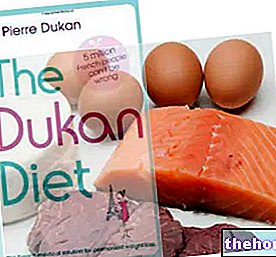What is the metabolic diet?
The metabolic diet is a diet created by Dr. Mauro di Pasquale, a Canadian doctor with clear Italian origins.
Like many other diets born in recent years, the metabolic diet promises to achieve exceptional results in a very short time

The leitmotif of the metabolic diet can be explained with a simple comparison. Our body is a machine that can run on both gasoline (carbohydrates) and methane (fat). However, the current lifestyle leads our body to mainly use gasoline (carbohydrates), accumulating methane in the tank (fats). If when we refuel (eat) we introduce little petrol and a lot of methane, we will get used to using methane (fats) mainly by gradually emptying the tank (weight loss).
However, in order to function at its best, our car also needs a minimum of petrol (carbohydrates) and this share, which varies from individual to individual, must be discovered by listening to the engine and evaluating its performance (importance of the initial evaluation phase).
How to set up the metabolic diet
It begins with a trial period, which is essential to discover the amount of carbohydrates necessary for the optimal functioning of the organism.
This phase, which lasts approximately 4 weeks, is characterized by a drastic reduction in the carbohydrate intake. The subject is thus forced to deal with the side effects of such a dietary approach (fatigue, nausea, headaches, etc.).
In this first phase, the food plan will be structured as follows: 12 days of unloading (few carbohydrates and many fats) followed by 2 days of recharging (many carbohydrates). According to Di Pasquale, such an approach would train the body to burn fat to meet its energy requirements.
TRIAL PERIOD
If during the discharge phase you feel particularly tired, the metabolic diet includes a whole series of solutions related to the type of symptoms manifested. The general line that unites all these solutions provides for a gradual increase in the carbohydrate intake, until the unwanted effects disappear. And it is at this point that, after a few more days of testing in which the subject makes sure that he has found the optimal quantity of carbohydrates, we move on to the second phase.
In the second phase of the metabolic diet, the body has become an efficient fat-burning machine and, to maintain this characteristic, 5 days of unloading must be followed by another 2 days of recharging. During the five days of unloading, the caloric distribution successfully tested during the test phase will be maintained. Same goes for the loading phase.
For further information: Example Metabolic Diet
Irrationality and possible side effects
Once again we are faced with a diet that takes certain concepts to the extreme. If direct experience were not enough, it is sufficient to examine history to discover that extremism, in addition to being unproductive, has always been one of the worst evils that afflicts humanity. So let's see what are the critical points and the main scientific "absurdities" of this diet.
Decrease in carbohydrates
The metabolic diet involves a drastic reduction in the consumption of carbohydrates (30 grams in the test phase). Perhaps Di Pasquale forgets that the human organism needs glucose to survive.
The essentiality of glucose is linked to the fact that the central nervous system and erythrocytes use only glucose for their energy metabolism. It is estimated that the minimum daily intake of glucose to allow the normal functioning of these systems is about 180 grams, well beyond above the quantities imposed by this type of diet.
Formation of ketone bodies
However, in particular conditions of extreme glucose deficiency (prolonged fasting), the body uses ketone bodies to survive. This is a desperate mechanism, effective in sustaining vital functions, but certainly not without side effects (chronic fatigue, nausea, vomiting, headaches, coma).
Energy efficiency of fats
With the same oxygen consumed, carbohydrates have a higher energy yield than fats. It follows that with such a dietary approach sporting performance in endurance disciplines would be seriously compromised. If you don't believe it, try asking a marathon runner who, about to overcome the "wall" of 32 km, runs into the famous "crisis".
High intake of fats and proteins
Di Pasquale gives free space to the consumption of cheeses and meats with a high protein and lipid content (smoked bacon, sausage, mayonnaise, butter, eggs, etc.). It could not be otherwise given that consuming lean meats would not achieve the fat quotas imposed by the metabolic diet.
And so it was that, while everyone advised to limit saturated fats and trans fats to reduce the risk of atherosclerosis and some cancers, Dr. di Pasquale came up with the "brilliant" idea of conceiving a diet where the intake of these substances was high. ...
Limited intake of fiber
The lack of fiber imposed by the metabolic diet is evident. Fruit and vegetables, in fact, contain a certain amount of carbohydrates and it is therefore recommended not to exceed their consumption. A real shame as fiber could reduce the damage caused by excess fat and cholesterol!
Trial period and will of the subject
As we have seen, the metabolic diet allows you to increase the amount of carbohydrates during the initial adaptation phase. But how does a subject understand if the symptoms he experiences are bearable or border on "" abnormality "? Hence the risk that a person with little willpower will increase the carbohydrate quota at the first signs of fatigue, nullifying the conditions metabolic of the diet.
Furthermore, the advice to take 30 grams of carbohydrates during this first period does not take into account individual variability (weight, body composition and efficiency in oxidizing lipids (lower in sedentary than in trained).
Carbohydrate Loading, Insulin Rush ....
Remember that each of us can store a limited amount of glycogen and that once these reserves are saturated, excess glycogen will inevitably be transformed into fat.
To roughly calculate the maximum level of glycogen that can be stored in your body just multiply your body weight by 30 and divide it by 4 (the calories developed by a gram of carbohydrates).
Thus, for example, a normal weight 70 kg man can store to the utmost 30 x 70 = 2100 Kcal which correspond to approximately 525 grams of carbohydrates.
Two days a week in which to eat "anything and everything" is more than enough to saturate these supplies. Assuming that during the unloading phase a subject consumes an average of 50 grams of carbohydrates per day, after 5 days he will accumulate a deficit of 500 grams (considering that his daily carbohydrate requirement is 150 grams). In practice, on the 5th day he will have emptied all his glycogen stores and the subsequent refill of carbohydrates will prevent him from producing and using the ketone bodies.
So wouldn't it be better to just cut down on carbohydrates rather than abolish them almost entirely? At least in this way we will spare our body useless insulin and hormonal fluctuations, avoiding all the negative effects of this "crazy" metabolic diet.
See also: The metabolic diet, Dr. Mauro Di Pasquale
Atkins diet
Scarsdale diet
Excess protein in the diet
How much protein in a balanced diet
Ketogenic diet? No thanks!




























